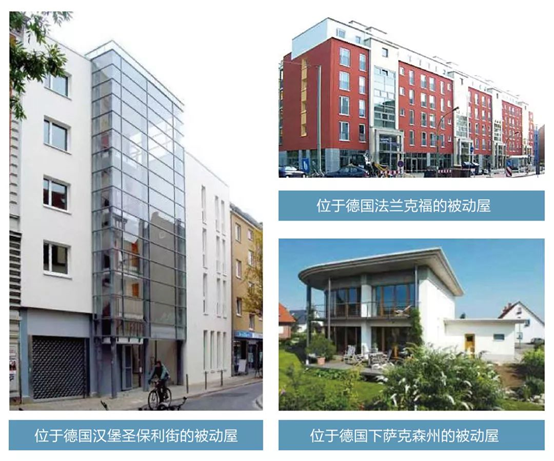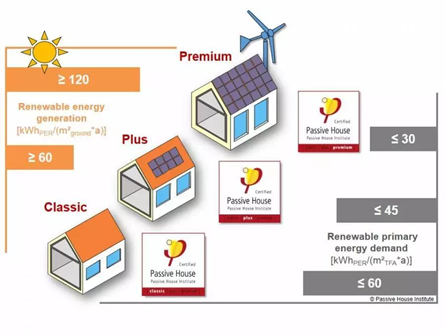What is a passive room?
Conceptually, it is an energy-efficient building designed and built based on passive technology. It does not require the use of traditional building air conditioning and heating equipment, relying on its superior thermal insulation performance and air tightness, from the building technology level to use the sun, lighting, human body, electrical heat dissipation and other natural heating methods to achieve constant temperature, constant humidity, Constant oxygen, isolated smog.
The "passive house" was first born in Germany. In the 1980s, the concept of passive houses was established on the basis of low-energy buildings in Germany. It is an energy-saving building standard that is moderate, environmentally friendly and economical. In some cities in Germany, new buildings have been built using passive houses since 2015.
Partial passive house project in Germany

Passive house level
Due to the current global demand for environmental pressure caused by the massive consumption of resources, the supply structure of resources is shifting from coal petroleum resources to renewable energy at an alarming rate. The low-energy demand for passive houses can continue to come from regional energy sources, and the old assessment system for building energy needs is based on the old supply system and does not apply to new supply systems. The famous German Passive House Research Institute (PHI) divides the passive house into three levels under the principle of considering the use of renewable energy: Classic (Classic), Plus (Excellent) and Premium (Excellent).
PHI's Classic level: It is a basic passive house with strict requirements for building insulation and energy equipment selection.
PHI's Plus class: Buildings collect or recycle additional energy, such as energy from the sun and air. This energy can be comparable to the energy required to operate a building.
PHI's Premium class: Ensures that buildings collect or recycle additional energy due to more stringent building maintenance structural standards, higher requirements for electromechanical equipment such as heating and air conditioning systems, heat exchange fresh air systems, and solar systems. , completely cover and exceed the needs of the house operation.

PHI German Passive House Certification three levels
So far, there are only a small number of passive houses in the world, which can reach the passive room of the Premium class.

Premium-class passive house in Mallorca
Passive house indicator
This time, Tianjin's Nature Plaza Hotel project aims to upgrade China's passive ultra-low-energy green buildings to a new level. The building owners, together with the designers of the Beijing Residential Building Design and Research Institute Co., Ltd. and the Beijing Building Energy Efficiency Research and Development Center, fully considered the economic and ecological factors. Together with the German Passive House Research Institute (PHI), the following construction indicators were determined:
The heat transfer coefficients of the external wall, roof and floor are 0.11 W/(m2K), 0.08 W/(m2K) and 0.12 W/(m2K), respectively;
The outer window adopts the certified product of the German Passive House Research Institute, the heat transfer coefficient is less than 0.8 W/(m2K), and the U value of the glass configuration used is 0.5 W/(m2K), and the g value is 0.52;
The new air blower group adopts the certified products of the German Passive House Research Institute, and the heat recovery efficiency is ≥82%, with functions such as bypass and antifreeze;
Ground source heat pump as a source of cold heat, while providing domestic hot water, ground source heat pump COP up to 4.9;
The 500m2 solar photovoltaic system is ready to use, with an annual production capacity of 166,054kWh/a.
In passive building construction, the fresh air system is one of the important components. How to ensure that the new wind turbines of the project meet the requirements of the German PHI Premium, which has become the focus of the German Passive House Research Institute (PHI) and the Chinese design party. In the end, the two sides jointly identified the German Dephina Sun God heat exchange central fresh air system as an electromechanical device.

